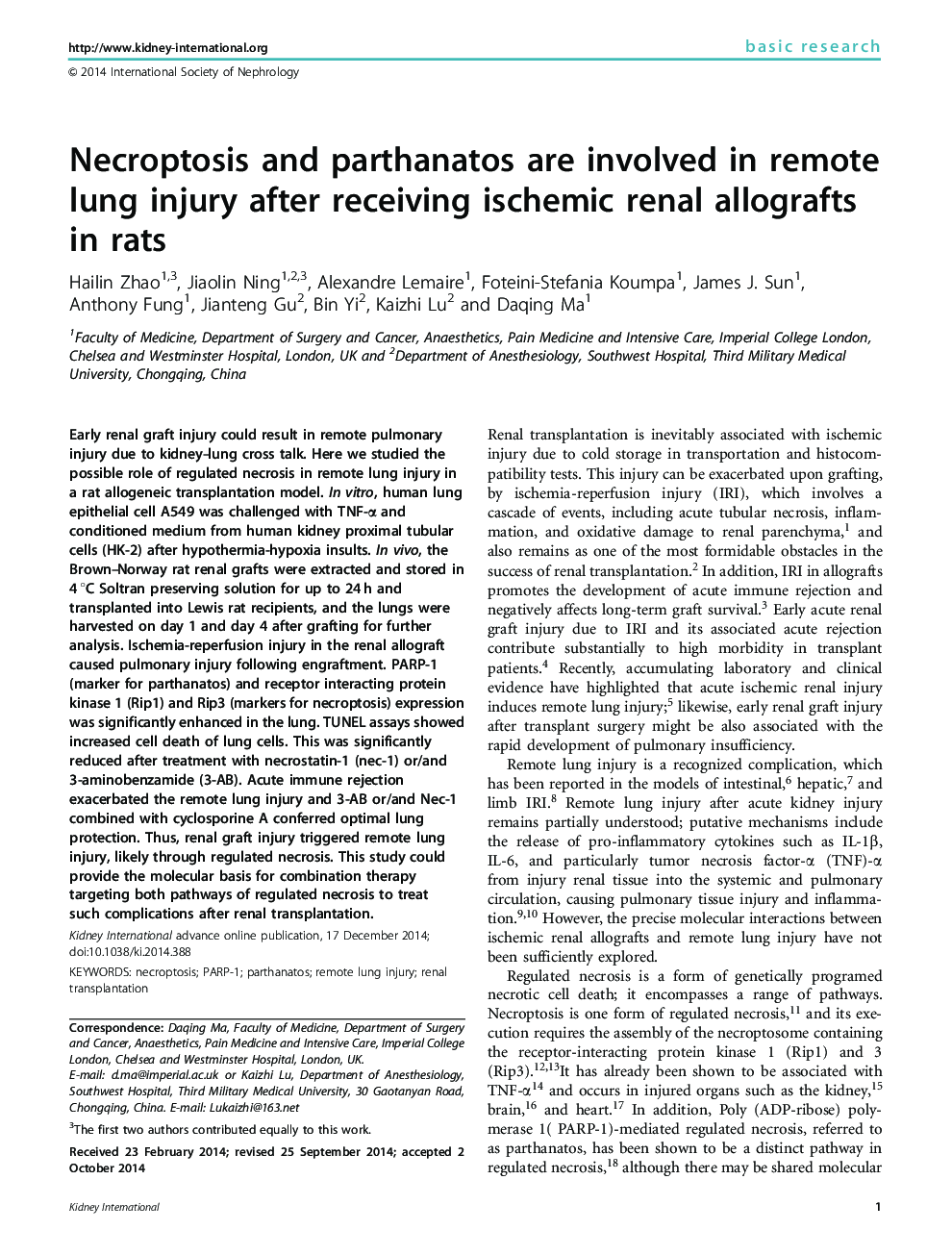| Article ID | Journal | Published Year | Pages | File Type |
|---|---|---|---|---|
| 6164080 | Kidney International | 2015 | 11 Pages |
Abstract
Early renal graft injury could result in remote pulmonary injury due to kidney-lung cross talk. Here we studied the possible role of regulated necrosis in remote lung injury in a rat allogeneic transplantation model. In vitro, human lung epithelial cell A549 was challenged with TNF-α and conditioned medium from human kidney proximal tubular cells (HK-2) after hypothermia-hypoxia insults. In vivo, the Brown-Norway rat renal grafts were extracted and stored in 4 °C Soltran preserving solution for up to 24 h and transplanted into Lewis rat recipients, and the lungs were harvested on day 1 and day 4 after grafting for further analysis. Ischemia-reperfusion injury in the renal allograft caused pulmonary injury following engraftment. PARP-1 (marker for parthanatos) and receptor interacting protein kinase 1 (Rip1) and Rip3 (markers for necroptosis) expression was significantly enhanced in the lung. TUNEL assays showed increased cell death of lung cells. This was significantly reduced after treatment with necrostatin-1 (nec-1) or/and 3-aminobenzamide (3-AB). Acute immune rejection exacerbated the remote lung injury and 3-AB or/and Nec-1 combined with cyclosporine A conferred optimal lung protection. Thus, renal graft injury triggered remote lung injury, likely through regulated necrosis. This study could provide the molecular basis for combination therapy targeting both pathways of regulated necrosis to treat such complications after renal transplantation.
Related Topics
Health Sciences
Medicine and Dentistry
Nephrology
Authors
Hailin Zhao, Jiaolin Ning, Alexandre Lemaire, Foteini-Stefania Koumpa, James J. Sun, Anthony Fung, Jianteng Gu, Bin Yi, Kaizhi Lu, Daqing Ma,
